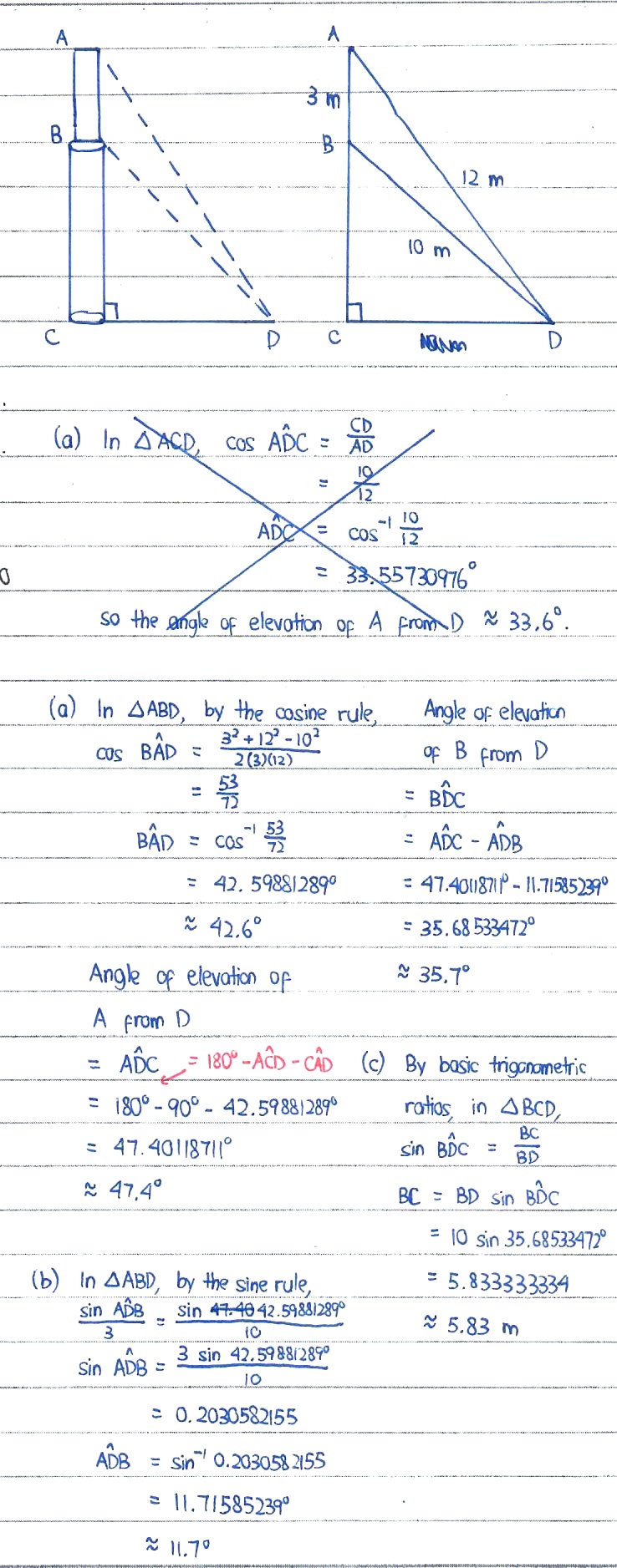Eric Nicholas K's answer to TitusLim's Secondary 3 E Maths Singapore question.
done
{{ upvoteCount }} Upvotes
clear
{{ downvoteCount * -1 }} Downvotes
I assume the diagram is something like this, because I cannot see the full picture of the diagram.
I use cosine rule and sine rule to work out some angles in the first two parts.
This method of finding length BC in part c is by far the easier of two available methods.
The more difficult method (which you will be looking at, if you have no idea how to do the first two parts) is to let BC be x m and CD be y cm, then formulate two equations based on Pythagoras' Theorem and then equate both equations together.
In other words, since CD is the common length between triangles ACD and BCD,
(Eq. 1)
y^2 = 12^2 - (3 + x)^2
y^2 = 144 - 9 - 6x - x^2
y^2 = 135 - 6x - x^2
(Eq. 2)
y^2 = 10^2 - x^2
y^2 = 100 - x^2
Since both the y^2 refer to the same length CD,
135 - 6x - x^2 = 100 - x^2
135 - 6x = 100
35 = 6x
x = 35/6 = 5.833333... m
I use cosine rule and sine rule to work out some angles in the first two parts.
This method of finding length BC in part c is by far the easier of two available methods.
The more difficult method (which you will be looking at, if you have no idea how to do the first two parts) is to let BC be x m and CD be y cm, then formulate two equations based on Pythagoras' Theorem and then equate both equations together.
In other words, since CD is the common length between triangles ACD and BCD,
(Eq. 1)
y^2 = 12^2 - (3 + x)^2
y^2 = 144 - 9 - 6x - x^2
y^2 = 135 - 6x - x^2
(Eq. 2)
y^2 = 10^2 - x^2
y^2 = 100 - x^2
Since both the y^2 refer to the same length CD,
135 - 6x - x^2 = 100 - x^2
135 - 6x = 100
35 = 6x
x = 35/6 = 5.833333... m
Date Posted:
4 years ago


